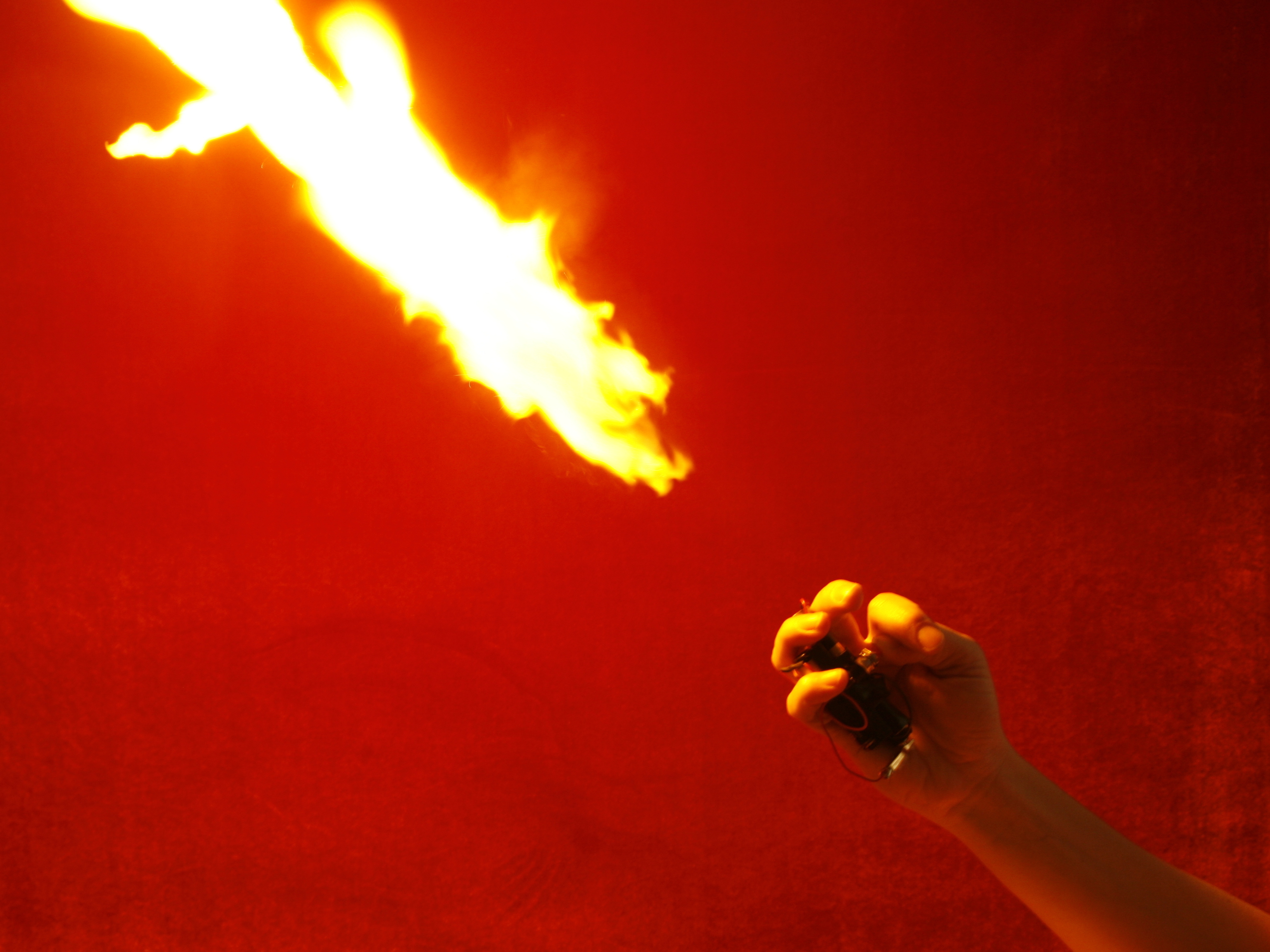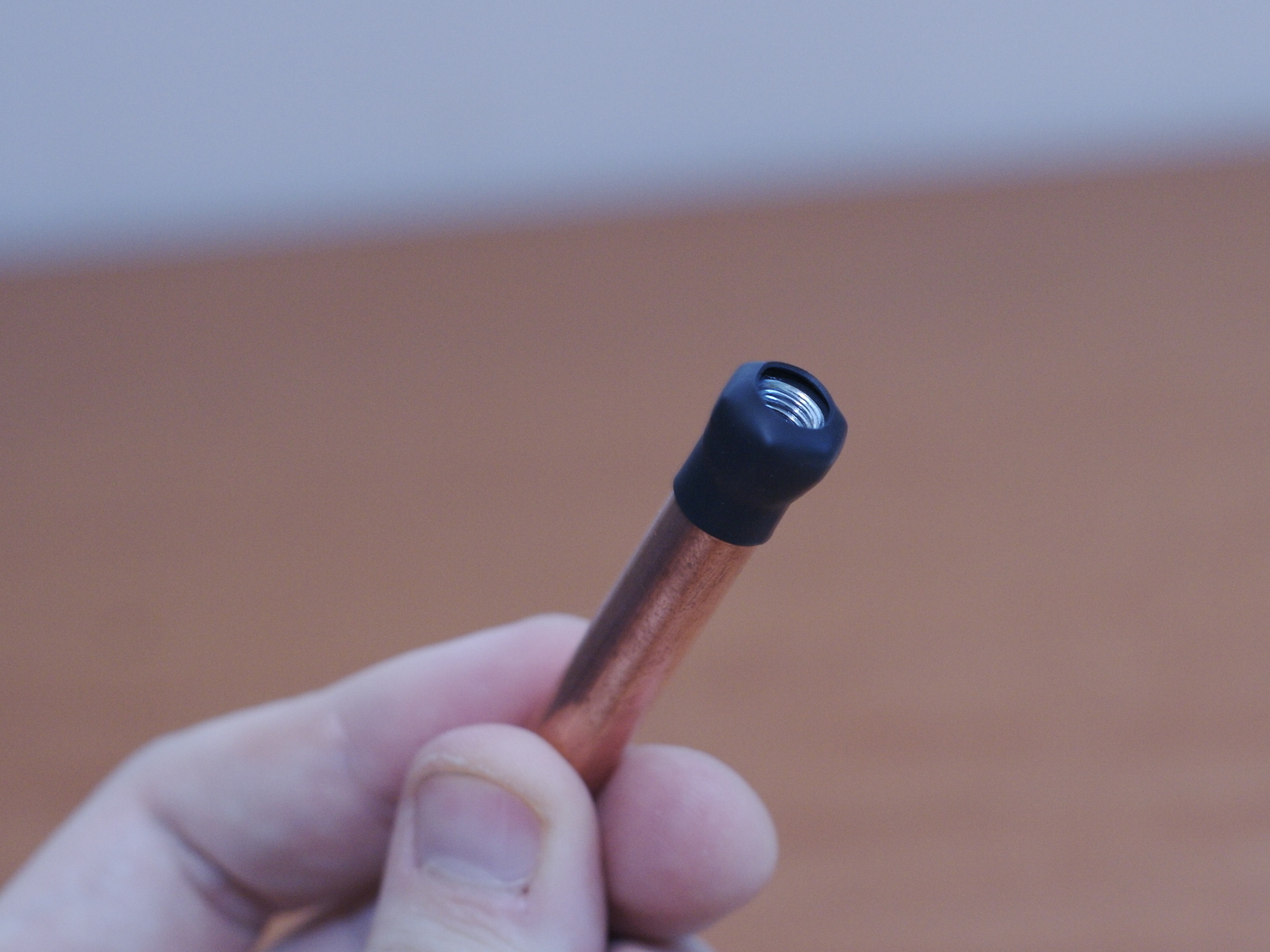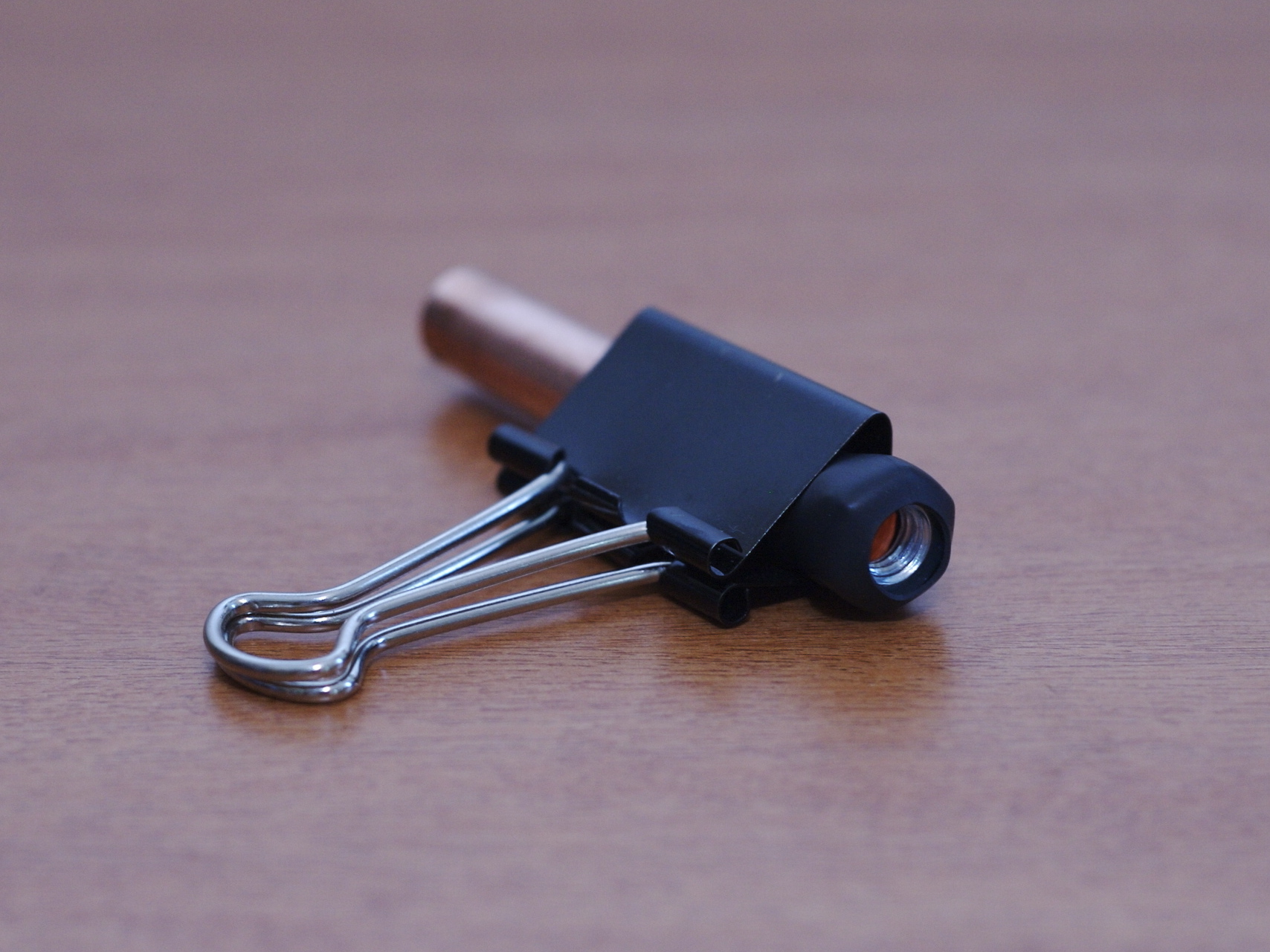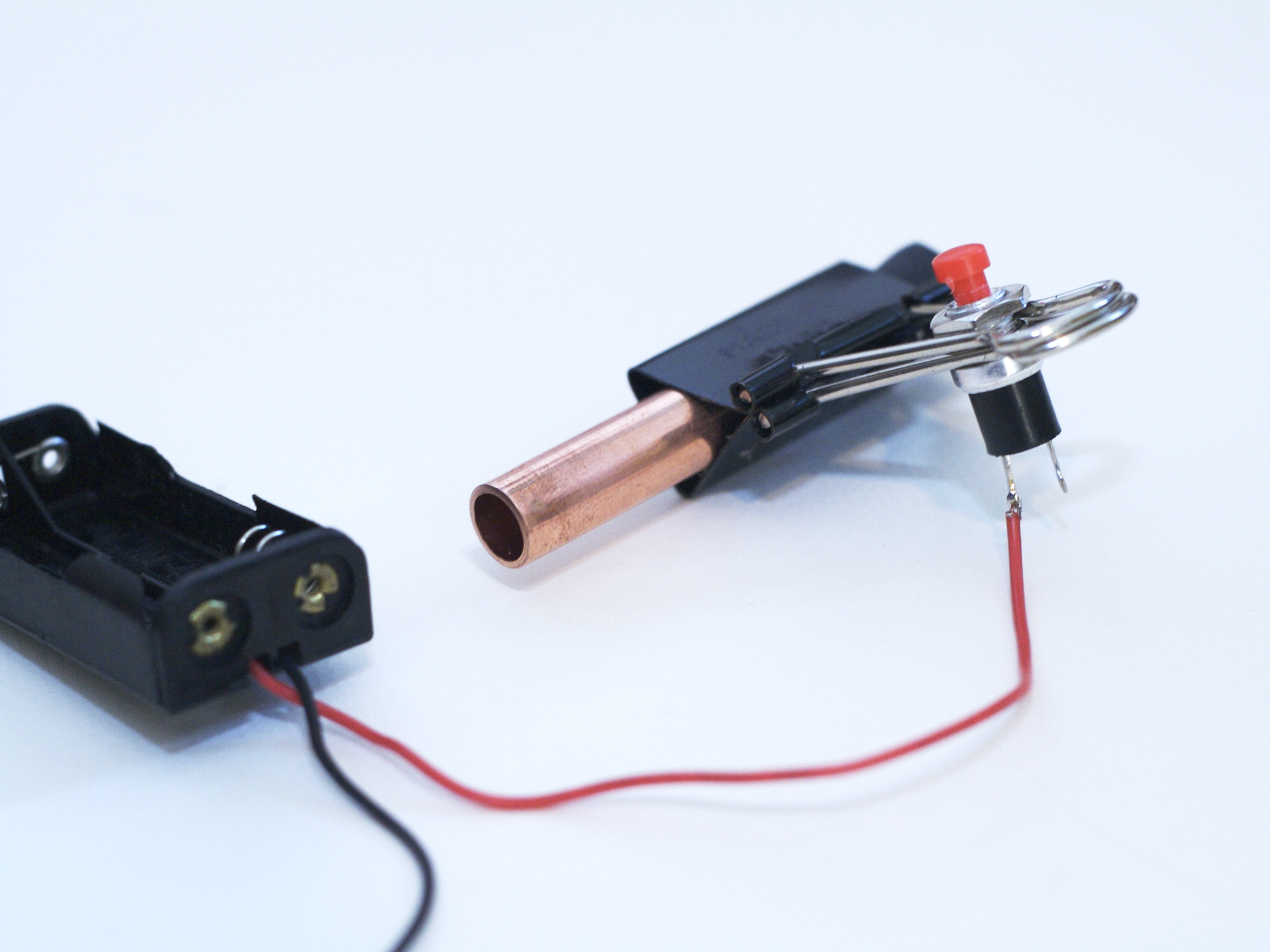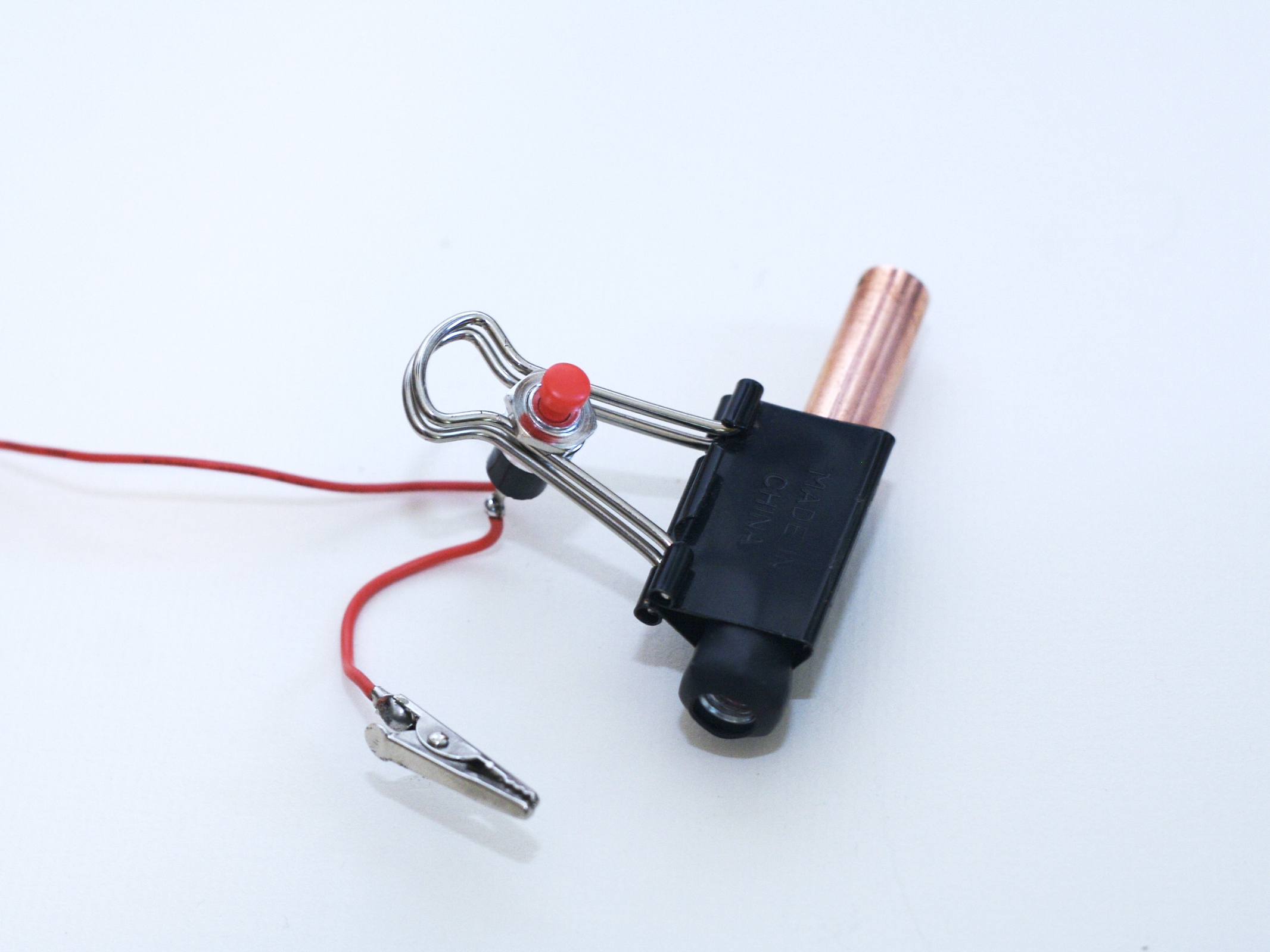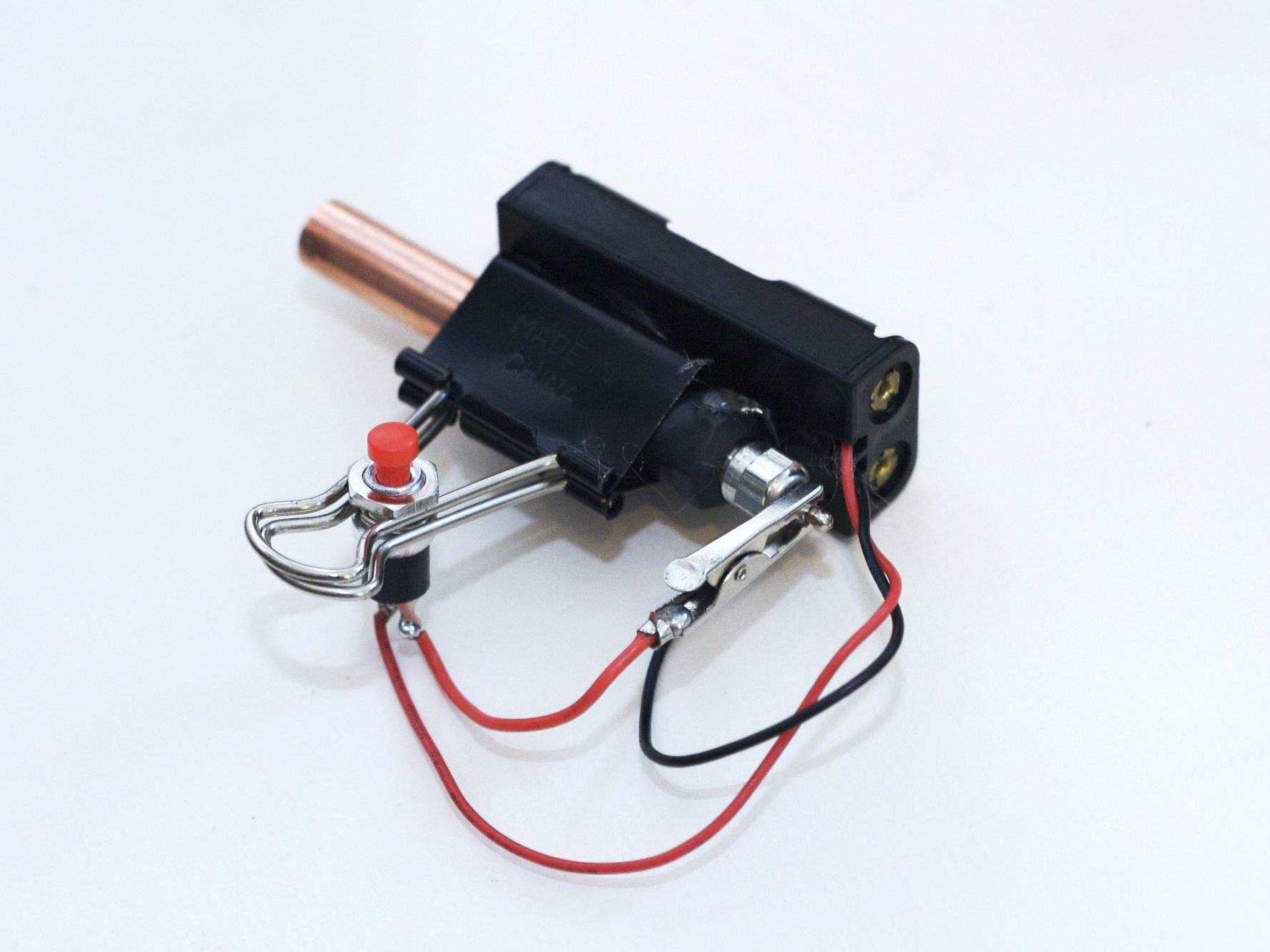A stalwart of close-quarter magicians for years, the electronic flash gun is a simple device: a battery-powered, hand-held ignitor that uses a “glo-plug” to light a bit of flash paper and cotton, shooting a fireball a few feet into the air.
You can buy one from most magic shops for around $50, but if you build one on your own, you’ll not only save a few bucks, you’ll also learn how easy it is to add fire effects to almost any electronics project. (And what gadget couldn’t stand a little more spurting flame?)
I call my variant “Orpheus Shooters,” after the booming voice I use before blasting a fireball into the air, cribbed without shame from The Venture Bros.’ Doctor Byron Orpheus, my current favorite cartoon necromancer.
I’m absolutely horrible at DIY — I’d solder my fingers to my face if it were possible — so if I can cook up something like this, you should be able to take this simple design and improve it immeasurably.
My model uses a minimum of parts and is nearly concealable in my fairly large hands, but don’t be afraid to tinker with the battery layout for maximum concealability. My grasp of the principles of electricity ends around “don’t lick a light socket,” so there may be smarter ways to rig this unit than the one I have chosen.
And of course, remember your fire safety fundamentals: it may be hilarious to shoot fireballs at your sleeping cat, but she’ll have the last caterwaul when you set your bed aflame.
Become a Licensed Pyromancer
A glo-plug, with its platinum heating element, is a disposable part in your Orpheus Shooter, or in any commercial flash gun. Glo-plugs are usually rated for about 50 ignitions, although mine have lasted at least twice that long. While ordering glo-plugs through the mail doesn’t require any special registration, ordering ignitables like flash paper does.
It’s worth buying online instead of at your local magic store. My local store charged over $10 a plug, while an online shop (http://starlight.com) charged just $3. The savings were worth the hassle of faxing in a copy of my driver’s license.
Glo-plugs (similar to those used in model rocketry, I’m told) come in two flavors: 1.5V and 3V. One isn’t better than another for our purposes, but you’ll want to match your plug to your power source, so just be sure to remember which one you bought.




